Filmation (1987), BCI (November 20, 2007), 4 discs, 705 mins plus supplements, 1.33:1 original full frame ratio, Dolby Digital 2.0 Stereo, Not Rated, Retail: $39.98
Storyboard:
A single marshal, with the help of some friends, ensures that the law is upheld on the frontier planet of New Texas.
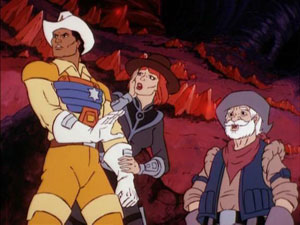
The Sweatbox Review:
I was sufficiently intrigued with BCI’s initial Bravestarr set, The Best Of Bravestarr, that I was looking forward to seeing more of the little-seen show. This was Filmation’s final series, a 65-episode syndicated show that failed to come anywhere close to the heights of He-Man in a commercial sense. It is a little bittersweet watching the show today, knowing that its failure helped to directly lead to the demise of the studio. Of course, with budgetary pressures ever worsening, the studio’s closure may have only been a matter of time anyway, so long as Lou Scheimer insisted on keeping production entirely in the USA— all within a single building, in fact. But the fact remains that had Bravestarr proved successful, Filmation might have had another show or two to share with us.
I cannot honestly say that Bravestarr promised great things, as it was certainly a decent but not outstanding show. Its premise, mixing the Old West with outer space adventure, did provide something different for cartoon audiences (although its contemporary Adventures Of The Galaxy Rangers had superficial similarities, which may have also harmed Bravestarr’s performance). The animation, though, was the typical stiff stuff that Filmation was known for, a necessity in order to sustain domestic production. Reused cycles and poses are seen throughout the show. Humorously, even the episode images shown in the DVD’s booklet repeat the same Bravestarr poses, showing just how ubiquitous they were. The moral messages at the end of each show are sincere, but do seem quaint today; I doubt they ever seemed too cool back in 1987, either. And yet… I cannot help but to like the show. The characters are unique even if they are two-dimensional at best, and the stories consistently entertain. And it’s all so darn wholesome!

To get the whole low-down on the show, you really need to view the Best Of Bravestarr set, as it has the introductory movie that was not a part of the series proper. The show’s opening probably does tell you all you need to know, but if you miss the movie then you’re not only shorting yourself on the Bravestarr set-up, you’re depriving yourself from seeing the finest animation Filmation ever did. Of course, if you just want to get one set, with a ton of episodes, then this Volume One set may be more to your liking. It has the first 33 episodes of the show, contained on three discs, plus a bonus disc of extras.
The first episode, Tunnel Of Terror, pretty much assumes the viewer has previous knowledge of the status quo, though new viewers should not feel too lost. The value of ”kerium” is quite apparent in this tale of rival miners, and Bravestarr’s animal-based powers are always spotlighted in every episode, using stock bits illustrating Bravestarr calling out, “eyes of the hawk,” or some such exclamation. The very next episode, Memories, provides background information on the father of Judge J.B., as well as serving to introduce the marauding Krang. The series’ main villain Tex Hex then appears in The Day The Town Was Taken. So, in the first three episodes, the status quo for the series is largely established. Fort Kerium is a mining town on New Texas, which is besieged by outlaws (Tex Hex in particular), and protected by an animal-powered marshal of American Indian ancestry. There. You’re all up to speed. The episodes go on to tell tales of racism (Kerium Fever, where humans resent the Prairie People for their kerium mining success), pre-judging people (Eye Of The Beholder, a tale also seen in the “Best Of” set, where Tex Hex falls for a blind woman), slavery (Thoren The Slave Master), and the nature of heroism (Unsung Hero). As mentioned, each story has a moral tag added at the end, ensuring that the viewer did not miss the message of the day.
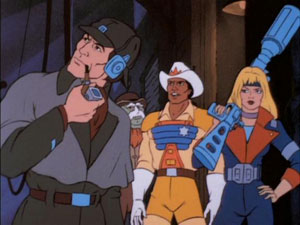
As the series progresses, one does note swipes of He-Man scripts, as acknowledged by the episode guide. To Walk A Mile, Jeremiah And The Prairie People, and An Older Hand all owe their beginnings to He-Man stories. I suppose this was inevitable, considering the crossover in staff, and the pressure to put out 65 episodes in quick succession. Perhaps this set’s most intriguing original story is the two-parter Sherlock Holmes In The 23rd Century, which sees Bravestarr heading to the planet of New London, where he teams with Holmes and goes up against a man by the name of Moriarty. Holmes buffs will be sure to check this one out, if only to compare it to the similarly-themed 1999 DiC series Sherlock Holmes In The 22nd Century.
From the first time I watched this show, I thought it had a unique quality, what with its somewhat bizarre mixture of genres. It all works, though, to create a positive and one-of-a-kind show that moved Filmation past the sword & sorcery of He-Man and She-Ra into the area of space opera— complete with the traditional wacky sidekicks and episode-ending morals that Filmation was known for. A good mix of stories in this set guarantees hours of cartoon fun, with some of the weirdest alien villains you are likely to encounter in a kids’ cartoon show. It’s all in good fun, with wholesome messages. What more could a parent want?

Is This Thing Loaded?
A commentary track for Eye Of The Beholder appears on Disc One, featuring writer Tom Tataranowicz and director Tom Sito, and hosted by Andy Mangels. They discuss the importance of the morals in the series (more so than in the movie), and the slick look that the show managed to maintain.

Disc Four has the balance of the extras, beginning with a Bonus Episode, which is Quest Of The Prairie People Episode One: Fun With The Fuzzy Folk. I am so surprised to see this included, but delightfully so. This was a spin-off pilot from Bravestarr, which makes this one of the very last projects produced by Filmation— which, as far as I know, has never been shown to the public before; and that makes this a terrific addition to this set. Unfortunately, the episode itself is a little on the dreadful side, obviously aimed at an even younger audience, almost seeming like a Hanna-Barbera comedy cartoon as designed by Rankin-Bass (not in a good way). The lighter tone and total lack of interesting characters, with a plot that elicited absolutely no interest from me, made watching it a tough slog. The sketchy video quality didn’t help any either. Nevertheless, I was still thrilled to have the opportunity to see this “lost” pilot.
The Interviews section starts with one with producer Lou Scheimer (4:42), who frankly talks about the commercial failure of the show, after an eighteen million dollar investment. Sadly, the audio cuts out halfway through the interview, so I never heard his full comments. Hopefully, BCI can fix this and include it again in the next set. Voice actor Pat Fraley (14:16) speaks enthusiastically about his Filmation career, and the pleasure it was to voice a lead hero for the first time. He acknowledges that Filmation had to be frugal, but only in the interest of keeping budgets low enough to allow for a fully domestic production. The benefit of working at Filmation was not the financial rewards, but rather the creative freedom that everyone had, unique for a large studio. Director Tom Tataranowicz (11:00) talks exclusively about his work on the feature, and his special liking for Thirty-Thirty and Tex Hex. Director/animator Tom Sito (4:18) discusses how wonderful it was to create memories for kids, even if few at the time could grasp what Filmation would come to mean for a generation of children.

Promos has the twelve-minute piece done to help promote the movie and subsequent series for its syndicated run (also on the “Best Of” set), plus several half-minute promos. Image Galleries include ones for the Bravestarr style guides and another for a series of print advertisements. Finally, the Trailers section has ones for He-Man, She-Ra, Dungeons & Dragons, Burst Angels, and Kiddy Grade (the latter two are from Funimation).
Case Study:
Bravestarr: Volume One comes in a handsome and sturdy slipcased set. The slipcase holds a unique fold-out package, which initially appears to be a standard book-type digipack, but instead of having overlapping discs this package has two discs held in hinged trays that lift up to expose the next disc— so any one disc can be removed without needing to remove another one first. Neat! I just hope that the teeny plastic hinges prove to be reliable over the long haul. An eight-page booklet has a nice episode guide that includes trivia for each episode, and a full description of the bonus disc contents.
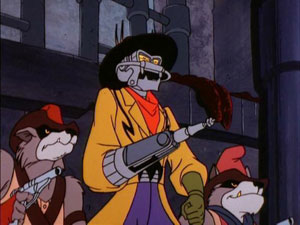
Ink And Paint:
This show looks about as good as it would had it been done today— if ink & paint was still done on cels. The prints are in good shape, and the compression work is mostly good, but having eleven episodes per disc does take its toll occasionally, with some aliasing noted. Any softness, however, I associate more with the method of production of this cartoon show, when placed in direct comparison to the crisp images that come out of modern production practices. Really, this is a very good looking show, with technically sound drawing that makes the series look sharp even when the animation is stilted.
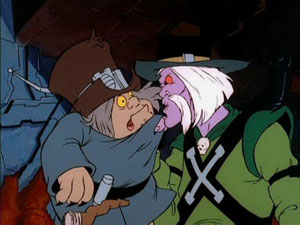
Scratch Tracks:
The stereo sound is just satisfactory, sounding a little better than mono would, but doing little else to impress. The low end is minimal here, with blasts and explosions sounding like they are struggling to escape the confines of a mediocre audio track. It’s no worse than most syndicated shows of the eighties, though.

Final Cut:
To be honest, though I do like the show, the “Best Of” set may be enough to satisfy casual fans. After all, that set has the premiere movie and another few of the best episodes already (two of which are on this Volume One set), with lots of great features. This made it tough for BCI to outdo themselves when it came to compiling the entire series run, but there is no doubting that 33 episodes is a whole lot of entertainment. As a completist, I shall be happy to have the entire series when the next box set appears, but for those simply curious about the show, I would still recommend starting with the “Best Of “set.
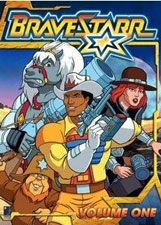 | ||
 |







